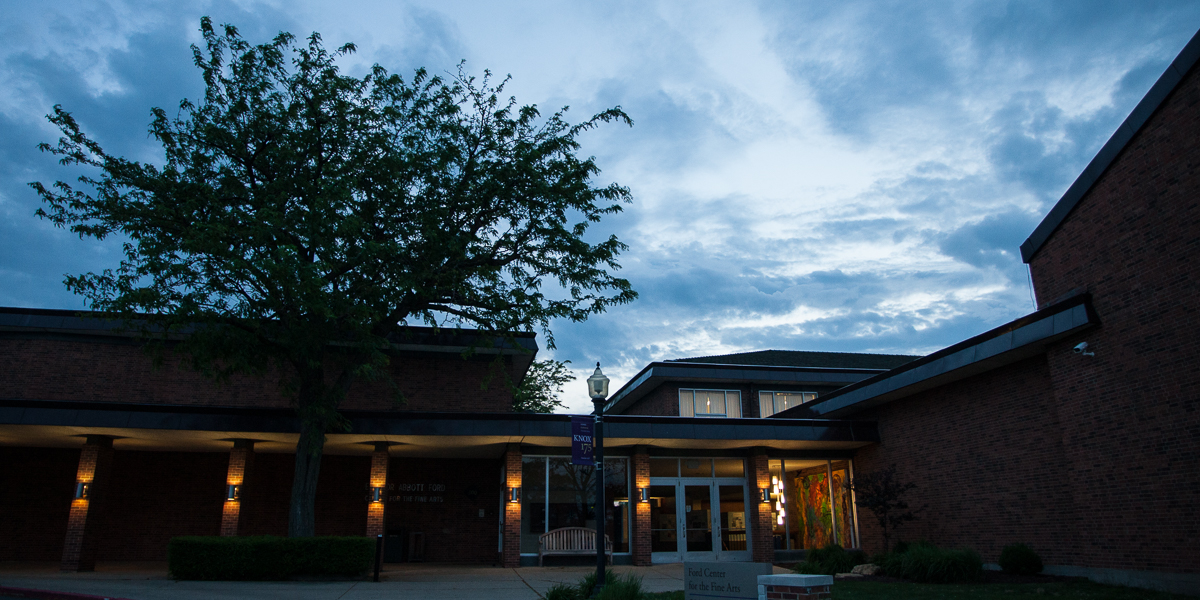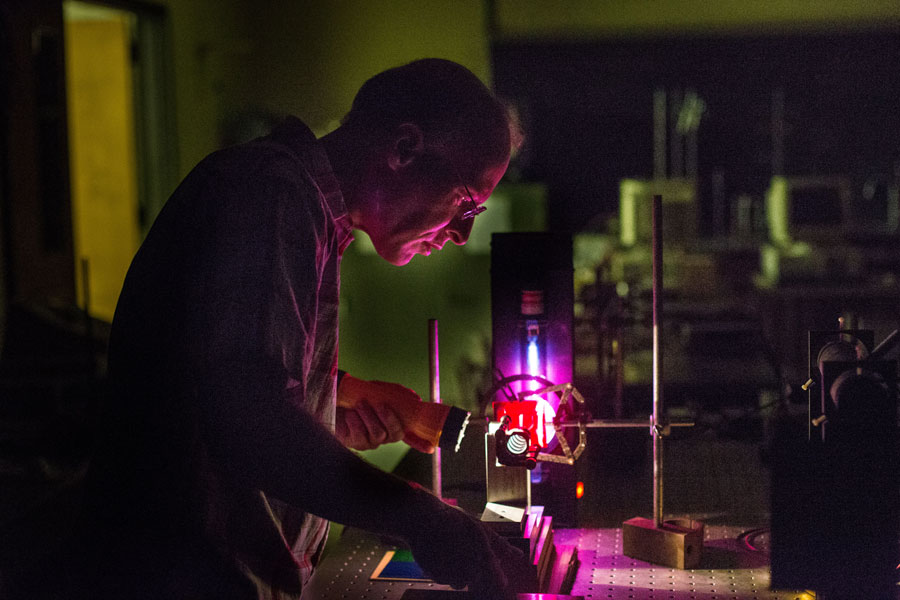Knox Stories
Kansas City PIE Trip Takes Students on a Tour of Alumni Success
The group spent four days, from March 13 to 16, 2024, visiting multiple alumni network locations and learning about their work.

Office of Communications
2 East South Street
Galesburg, IL 61401


Knox College Physics Professor Tom Moses and three of his former students have designed a less costly, easy-to-build version of a scientific instrument often used in teaching about atomic spectroscopy and the physics of lasers.
Their work, which was published recently in the American Journal of Physics, involves an instrument called the Fabry-Perot interferometer. It is a tool for experiments in high-resolution spectroscopy -- the breakdown of an object's light into its component energies. The experiments test some of the predictions of quantum mechanics for real atomic systems.
The interferometer is a precision instrument that typically costs at least $5,000 when purchased from an educational supplier, Moses said. The version that he and his colleagues designed can be built for about one-tenth that amount, or $500.
"Now, any college, anywhere, can have one of these," he said. "Otherwise, you might have to plunk down $5,000 or more, and not every place could have one."
In the journal article, Moses and his colleagues noted that previous researchers have come up with designs for inexpensive Fabry-Perot interferometers. But the work done at Knox provides "an alternative to these designs that offers greatly improved convenience of fabrication, low cost, and improved instrumental finesse," they wrote.
Moses led the project, receiving assistance from student researchers over a period of several years. His co-authors on the journal article were physics majors Mark Wolak ‘12, Fahim Chundurwala ‘08, and Tenzing Shaw ‘09.
"It was a great opportunity to get experience working on a real, long-term physics experiment," said Shaw, now a software engineer at LiveRamp in San Francisco, California.
While at Knox, Shaw went through the "3-2" dual-degree program that enables students to earn two degrees in five years: a bachelor of arts from Knox and a bachelor of science in engineering from a top engineering school. In Shaw's case, that was the University of Illinois at Urbana-Champaign, where he also earned a master's degree in electrical and computer engineering.
Chandurwala, now a software engineer at Wolfram Research Inc. in Champaign, Illinois, said Moses was his mentor throughout his time at Knox.
"After taking introductory physics classes with him, I was very keen on working on projects with him outside of the classroom," Chandurwala said. "It is his attitude toward his students in the classroom, enthusiasm toward physics, and approach to learning that made me want to work with him."
Wolak, who is now pursuing a master's degree in electrical engineering at Northern Illinois University, said the project offered him a chance to learn something new, beyond what he'd learned by that time in class.
"I'm very thankful for the opportunity to do research while at Knox," Wolak added. "It was a pleasure to work alongside Professor Moses for the summer, (and his) help was an invaluable resource."
Published on August 07, 2015
 Now any college, anywhere, can have one of these.
Now any college, anywhere, can have one of these.